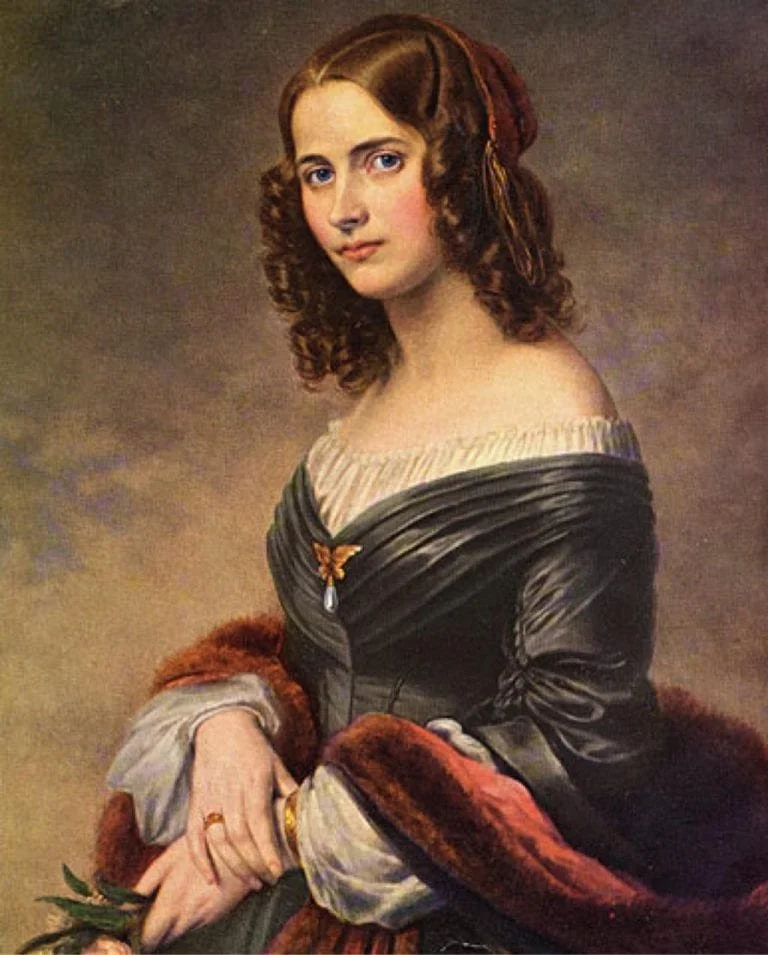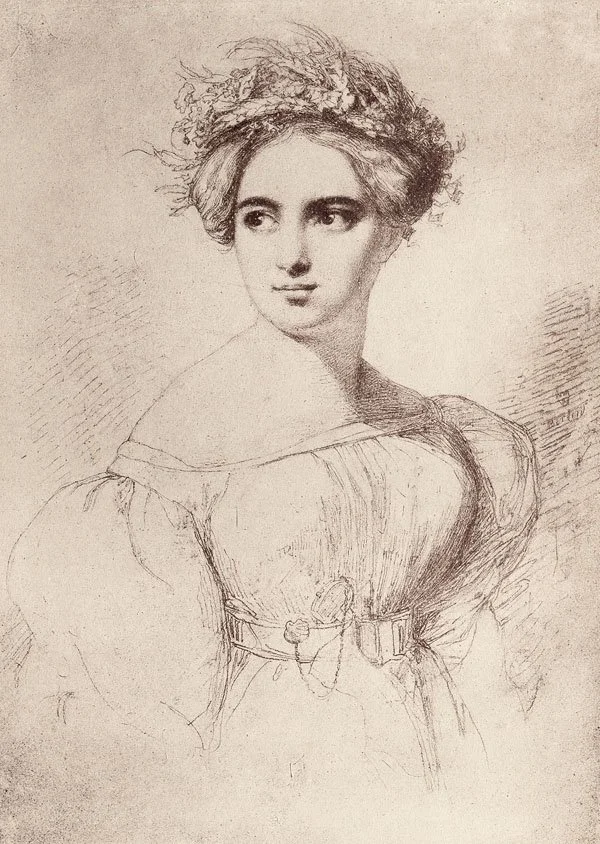Composer of the Month: Fanny Mendelssohn
Fanny Mendelssohn was a German pianist and important composer in the early Romantic Period.
The Life & Music of Fanny Mendelssohn
Fanny Mendelssohn was born on November 14, 1805 in Hamburg, Germany, to a family already famous for its musical talents. Fanny was drawn to the piano as a child, and was a highly skilled and passionate player by the time she was thirteen.
Like her brother, Felix (who you may have heard of), Fanny loved composing - and was very good at it! However, it was not considered proper for women in the early 1800’s to pursue a career. In fact, her father wrote to her in a letter: “Music will perhaps become a profession for your brother Felix, but for you it can and must be only an ornament.” How awful! These harsh words did not deter her, though, as she went on to write over 450 pieces of music with the support of her brother, husband, and artistic friends..
A sketch of Fanny by her husband, Wilhem Hensel
Initially, the few pieces Fanny published were done so under her brother’s name. Felix encouraged her to publish, but also worried about her reputation being tarnished if her secret identity as a composer was revealed. Fanny’s husband, artist Wilhelm Hensel, however, encouraged Fanny to publish works under her own name, which she did later in life.
Understandably, Fanny was dissatisfied with society’s attitudes towards women. She was a champion for the arts and for people courageously following their dreams. She helped others by hosting gatherings at her home in Berlin where artists, writers, and fellow musicians gathered to share their work and support each other. Through such gatherings, she became with fellow female composer Clara Schumann.
Fanny’s compositions include a piano trio, a piano quartet, an orchestral overture, and four cantatas. However, as she did not have any formal study in instruments other than the piano, most of her works were for this, her favorite instrument. Fanny wrote over 125 pieces for the piano, and well over 250 lieder, or “art songs” that were popular at the time. Many of her piano pieces are song-like, and are often titled Lied fur Klavier, or Song for Piano. One musicologist has noted that, compared to her brother’s, Fanny’s composition style has a greater “harmonic density that serves to express emotion.”
Fanny died in 1847 of a stroke, and her brother died only six months later. While Felix’s music and career has always been acclaimed, realization of Fanny’s contributions to the development of art song and piano music in the early Romantic Period has really only become known in the last 50 years.
Fanny’s Greatest Hits
“Das Jahr” (The Year)
Fanny’s score for May: Spring Song, featuring Wilhelm’s illustration of a carefree duo of children during springtime
In 1841, Fanny presented her husband with a remarkable Christmas present: thirteen short pieces for piano, entitled Das Jahr (The Year). The piece contains one piece for each month of the year, and closes with a postlude. On the score for each she wrote a verse of poetry, and her husband later added beautiful paintings.
For info about each piece in Das Jahr, we recommend this site.
Have a listen!
Das Jahr - #5 May “Fruhlingslied” (Spring Song) - does this piece sound like springtime to you?
Das Jahr - #8 August - the piano imitates trumpet calls, leading into a joyful harvest parade
Piano Trio in D Minor
Fanny composed this piano trio - written for piano, violin, and cello - between 1846 and 1847 as a birthday gift for her sister. The piece was published after Fanny’s death, in 1850. At the time, one critic described the piece as “...broad, sweeping foundations that build themselves up through stormy waves into a marvelous edifice. In this respect the first movement is a masterpiece, and the trio most highly original.”
Have a listen!
Piano Trio in D Minor - each of the four movements has a very different emotion. Listen to all four in this video, or via Spotify below
Students! Check your practice assignments and email for more Fanny Mendelssohn resources. Complete at least one of these to collect a trading card!



